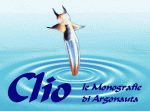
Clio Supplemento a Argonauta 7-12 2012
 |
 |

|
La foto da satellite, cortesia di Google Earth, mostra chiaramente la costa interessata: a destra l'abitato di Marina di San Nicola e a sinistra l'abitato di Ladispoli. Tra i due una zona costiera ancora tenuta a verde con una foresta planiziale originaria, e in basso il castello Odescalchi e la Posta Vecchia. Questi edifici sono stati edificati su una piattaforma di roccia costituita da una propaggine lavica del complesso vulcanico Cerite. Su questa successivi rimaneggiamenti ambientali hanno depositato calcareniti miste ad argille. Parte di queste rocce si estendono nel mare, in alcuni punti, per poche centinaia di metri. A sud-est di Marina di San Nicola il fondale è sabbioso con peliti, frutto delle continue immissioni di materiali da parte del fiume Tevere. A nord-ovest di Ladispoli il fondale è sempre sabbioso e frammisto ad argille. |
The satellite photos, courtesy of Google Earth clearly shows the costs involved: on the right the town of Marina di San Nicola and left the town of Ladispoli. Between the two still kept in a coastal area with a forest green plain original, and down the Odescalchi castle and Old Post. These buildings were built on a rock platform consists of an extension of the volcanic lava Cerite. On this subsequent environmental alterations have deposited calcarenites mixed with clay. Some of these rocks extend into the sea, in some places, a few hundred meters. To the south-east of Marina di San Nicola The ground is sandy mudstones with the result of the continuous introduction of materials from the Tiber River. To the north-west of Ladispoli the bottom is always mixed with sand and clay. |
